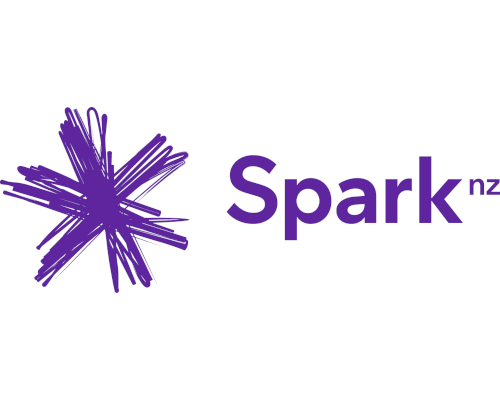Spark announces 5G roll out plans into 2020 and
network vendors
•
5G roll out for further heartland regional and major
centres in 2020
•
Roster of technology vendors confirmed in line with
multi-vendor strategy
Spark today outlined the next phases of its progressive roll out of 5G services. Spark will deliver 5G wireless broadband into five more South Island heartland locations prior to Christmas, followed by further heartland communities from March 2020. A broader range of 5G services, covering both mobile as well as wireless broadband, will launch into major centres from mid 2020, subject to spectrum being made available by the Government.
This builds upon Spark’s announcement in September that it had switched-on the first 5G customer services in New Zealand, with the launch of 5G wireless broadband in Alexandra.
Mark Beder, Spark’s Technology Director said wireless broadband is the first meaningful use-case for 5G in New Zealand and is the focus for the initial phase of Spark’s 5G roll out.
“Our 5G roll out approach is two-fold. Firstly, we are advancing our network delivery plans so we can roll out quickly in major centres once the necessary spectrum becomes available. Secondly, we’re innovating by repurposing some of our existing spectrum to deliver 5G wireless broadband in places where it will make a real difference to customers,” Beder said.
“We are prioritising our activity to heartland locations as we think these are the places that will benefit most from the increased capacity and speed of 5G wireless broadband, and we are excited to be bringing the early benefits of 5G to customers in parts of New Zealand that have usually lagged well behind the major centres for previous technology rollouts.
“The roll-out of 5G wireless broadband to heartland locations from March 2020 will use some of our existing spectrum bands and Nokia Radio Access Network (RAN)* equipment; in a continuation of our partnership with Nokia who assisted with the launch of 5G services in Alexandra. Nokia will also be our partner for the other heartland locations that will be launched before Christmas.”
Rajesh Singh, Spark’s General Manager of Value Management said that, in line with its previously-stated multi-vendor strategy, Spark now has three companies – Nokia, Samsung and Huawei - on its roster of preferred RAN equipment suppliers for 5G. In addition, Spark will continue to use Cisco and Ericsson for separate elements of its existing Network Core, which has already been upgraded to ensure it is Non-Standalone (NSA) 5G capable.
“We’ve consistently said our approach to 5G will be multi-vendor. A key reason for this is that 5G technology is still emerging and is likely to develop significantly in the next few years, so a mix of vendors makes sense,” Singh said.
“As with any network deployment the roll-out of our 5G network is subject to government approval in accordance with the Telecommunications (Interception Capability and Security) Act 2013 (TICSA). We have already obtained approval through TICSA to use Nokia 5G RAN equipment for our recently announced deployment in Alexandra, and for our upcoming locations before Christmas. We have withdrawn our original TICSA application, which proposed a single-vendor 5G RAN strategy. We will work through the TICSA approval process in due course with our other RAN vendors, prior to any deployment of their equipment.”
*There are three parts
to a telecommunications system:
• User’s phone or device
• The RAN (Radio Access Network) – includes the cell towers, antennas and backhaul (fibre connection to the core), as well as the radio connection to a user’s phone or device.
• The Network Core – the central processing functions that authenticate user devices, provide real-time charging for services, and connect users to other networks such as the internet, fixed phones, or other mobile networks
ends



 2Degrees: Stop The Pings - Half Of Kiwis Overwhelmed By Notifications
2Degrees: Stop The Pings - Half Of Kiwis Overwhelmed By Notifications Electricity Networks Association: How Many More Trees Need To Fall On Power Lines Before The Rules Change?
Electricity Networks Association: How Many More Trees Need To Fall On Power Lines Before The Rules Change? Parrot Analytics: Netflix Earnings - Price Hikes With Minimal Churn | Will Netflix Be A Bright Spot For Markets?
Parrot Analytics: Netflix Earnings - Price Hikes With Minimal Churn | Will Netflix Be A Bright Spot For Markets? Canterbury Museum: Mystery Molars Lead To Discovery Of Giant Crayfish In Ancient Aotearoa New Zealand
Canterbury Museum: Mystery Molars Lead To Discovery Of Giant Crayfish In Ancient Aotearoa New Zealand Ngā Pae o te Māramatanga: Māori Concerns About Misuse Of Facial Recognition Technology Highlighted In Science
Ngā Pae o te Māramatanga: Māori Concerns About Misuse Of Facial Recognition Technology Highlighted In Science Retail NZ: Retailers Call For Flexibility On Easter Trading Hours
Retail NZ: Retailers Call For Flexibility On Easter Trading Hours



